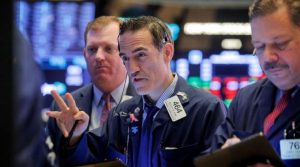The three major US indexes fell on Thursday after conflicting headlines on US-China trade relations and a row between the world’s top two economies over the Hong Kong protest led to uncertainty over the timing of a deal to end the dispute.

All three indexes had opened flat after a report that the United States could delay tariffs on Chinese imports even if a deal was not reached by Dec. 15, when tariffs kick in on goods including items such as electronics and Christmas decorations.
The benchmark S&P 500 ended the last session in the red after Reuters reported that the deal could slide into next year. Political tensions between the two sides after U.S. legislation supporting Hong Kong protests have also dulled the mood.
“With the ebb and flow of developments around trade, we are seeing investors taking a pause,” said Matt Hanna, Portfolio Manager at Summit Global Investments. “The bigger concern right now is whether they are going to get a trade deal done or not.”
Chipmakers with a large revenue exposure to China were down, with the Philadelphia Semiconductor index .SOX falling 0.7%.
At 10:19 a.m. ET, the Dow Jones Industrial Average .DJI was down 76.37 points, or 0.3%, at 27,744.72, the S&P 500 .SPX was down 9.64 points, or 0.3%, at 3,098.82. The Nasdaq Composite .IXIC was down 23.84 points, or 0.3%, at 8,502.89.
In a bright spot, shares in TD Ameritrade Holding Corp (AMTD.O) jumped 17% after CNBC reported bigger rival Charles Schwab Corp (SCHW.N) was in talks to buy the discount brokerage. Schwab’s shares gained 7.4%.
Macy’s Inc (M.N) slipped 2.4% after the department store operator cut its full-year profit forecast, blaming weak international tourism and sluggish mall traffic.
Tiffany & Co (TIF.N) gained 2.8% as Reuters reported LVMH (LVMH.PA) persuaded the jewelry chain to allow it to access its books after the French luxury group raised its bid to about $16 billion.
Declining issues outnumbered advancers for a 1.90-to-1 ratio on the NYSE and for a 1.59-to-1 ratio on the Nasdaq.
The S&P index recorded 10 new 52-week highs and two new lows, while the Nasdaq recorded 32 new highs and 48 new lows.








